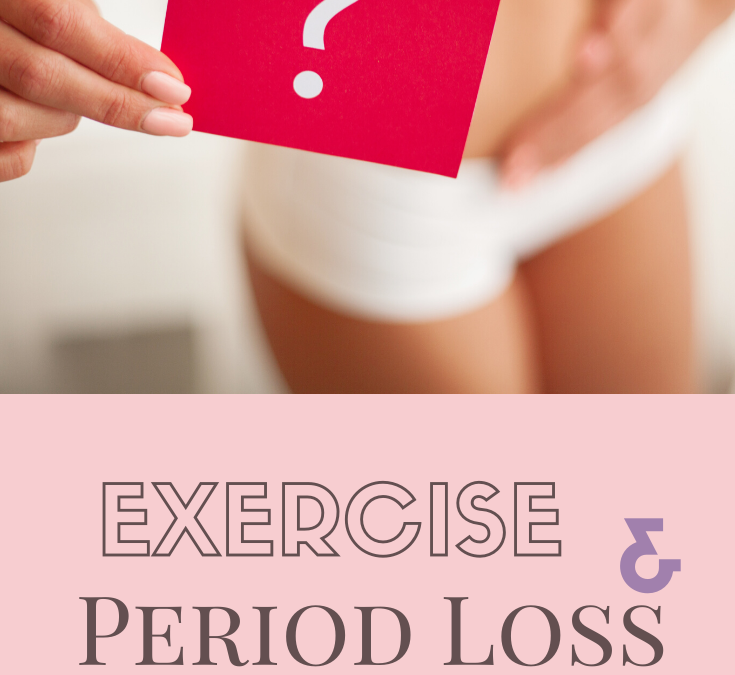Exercise-induced period loss medically known as exercise-induced amenorrhea is relatively common, especially if you’re starting a new exercise routine and making subsequent dietary changes. And, while this is common, it can lead to health complications if it continues and becomes persistent. Yet, when it comes to exercise and period loss addressing the hormonal imbalance, overproduction of stress hormones and negative energy balance can help restore your period and prevent further issues.
Page Contents
Identifying Exercise-Induced Period Loss
It’s pretty easy to spot when exercise has impacted your menstrual health. Some tell-tale signs include:
- Irregular cycle length that extends beyond 36 days
- Very light bleeding accompanied by shorter periods
- And experiencing less than nine periods a year
If you’re beginning to notice these signs, you should take the opportunity to evaluate your lifestyle. It could be that a sudden increase in exercise frequency or intensity has caused this to occur. Additionally, undergoing significant weight loss or restrictive dieting can also impact your menstrual health and delay your period.
Common Causes
Strenuous exercise and sudden nutritional changes can cause physiological changes and stresses to occur in the body. These changes can impact hormonal balance, increase stress hormones, and create a negative energy balance within the body. All of which affect reproductive and menstrual health.
Hormonal Imbalance
Recurrent episodes of high-intensity exercise can lead to communication issues between the hypothalamus, pituitary gland, and ovaries. Therefore, reproductive hormones aren’t released, and ovulation can’t occur. And, if the body doesn’t ovulate, your period won’t make its monthly visit.
Furthermore, this imbalance of hormones can decrease estrogen levels and contribute to severe complications if not addressed. Ongoing exercise-induced period delay can lead to fertility complications, irregular periods, light period flow, reduced energy, and reduced bone density. The issues, as mentioned earlier, all stem from low levels of estrogen. If low levels of estrogen aren’t corrected, they can also increase the risk of heart attack and high cholesterol.
Overproduction of Stress Hormones
Intense exercise can increase stress within the body. And, since the body has trouble differentiating between good and bad stress, it responds the same way. Meaning your body interprets the elevated stress hormones to say you’re not in an ideal position to procreate. So, it doesn’t secrete reproductive hormones to trigger ovulation. When this happens, the ovaries don’t release an egg, which halts menstruation.
Negative Energy Balance
The body is so intelligent that when it senses unhealthy conditions not conducive for reproduction, it halts ovulation. And, burning more energy than your body is consuming is a harmful condition that impedes your period. When you combine low body weight, intense exercise, and little caloric input, you trick the body into thinking it’s starving. Hence why it goes into starvation mode and begins to shut down organ systems that are not essential for survival, such as the reproductive system. Which in turn means ovulation won’t occur, and your period will be missing.
Treating Exercise-Induced Period Delay Naturally
As always, your first step should be to discuss what you’re experiencing with your doctor. They will be able to administer tests to ensure there aren’t any other underlying causes or conditions contributing to period irregularity. Once all other factors are ruled out, they will begin making suggestions about restoring your period. They may start with general lifestyle modifications to see if those changes help to bring back your period naturally.
For instance, increasing your caloric intake to match your workouts’ level and intensity will correct a negative energy balance. Additionally, this can also help get your body weight to a healthy place if you’ve experienced dramatic unhealthy weight loss. Furthermore, making adjustments to your exercise routine may also be beneficial. Creating diversity by alternating between high-intensity, moderate intensity, and low-intensity workouts can help improve negative energy balance and reduce stress hormone production. Also, depending on how often you’re working out, decreasing your sessions to 3-4 times per week may allow your body the time it needs to recover and increase estrogen levels properly.
Recovery Takes Time
When it comes to restoring exercise-induced period loss, it may take time for your period to return to a normal healthy state. Making corrections to your lifestyle will impact hormonal balance, stress hormone production, and energy balance and can be seen over six months. It’s essential to continue making changes to your exercise and nutrition to support your menstrual and reproductive health. Working with your doctor and seeking guidance from a registered dietitian may also help you restore your period.
References
USC Fertility: 5 Things You Should Know About Exercise-Induced Amenorrhea






